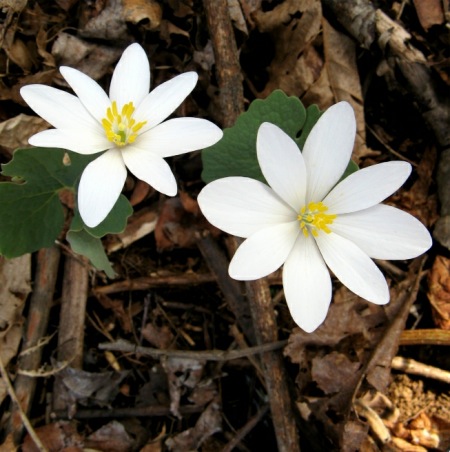Bloodroot
In a lot of respects, visiting in early April was beneficial – the flower of the bloodroot plant does not last that long – it blooms from March until May, so I caught it pretty much in the middle of its blooming period. The flower petals are shed within a couple of days of pollination by bees and flies so I was fortunate indeed to find a small number of the beautiful flowers.
Despite the fact that the plant was used as an herbal remedy by the Native Americans, caution is advised in its use. Bloodroot contains sanguinarine, which kills animal cells. In 2005, the “folk healer” Dan Raber, of Rochelle, GA, was arrested and charged with practicing medicine without a license after patients he was treating for cancer were severely disfigured after using a paste that he had given them that contained extracts of bloodroot. A licensed M.D., Lois March, surrendered her medical license to settle charges that she aided Raber by prescribing opiates to relieve the pain caused by the bloodroot extract treatment. The Quackwatch website has more information. Bloodroot extract is used in the mole remover Dermatend and also in some toothpastes as an anti-bacterial and anti-plaque agent. Perhaps it is safe for removing moles and skin tags, but I think I’d consult with a physician before using it.
Bloodroot (sanguinaria canadensis)


Wonderful photos, Jeff. I love the bloodroot flower; so pretty. I am very impressed with all the progress you have made. The driveway looks great. We’ll have to talk soon!
Even though the flower doesn’t last long, I have always loved bloodroot. I think the leaf is so beautiful and it grows larger and larger throughout the summer. We had lots of bloodroot in Boone. When the owner of the adjoining field decided he was going to plow it up to grow Christmas trees, I dug up the bloodroot along the treeline at the edge of the field and transplanted it to our place where it thrived. We even brought a plant along with us and planted it here.